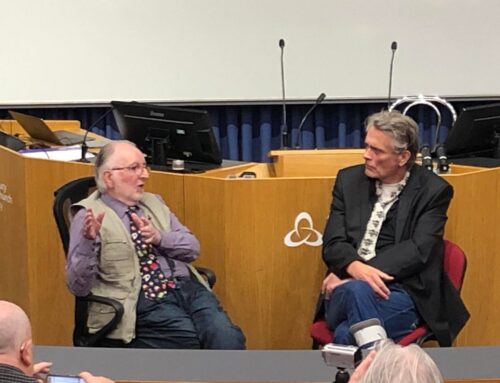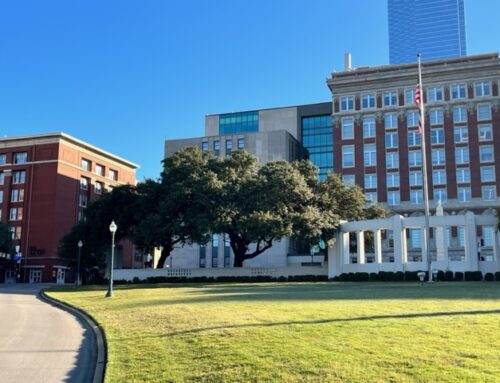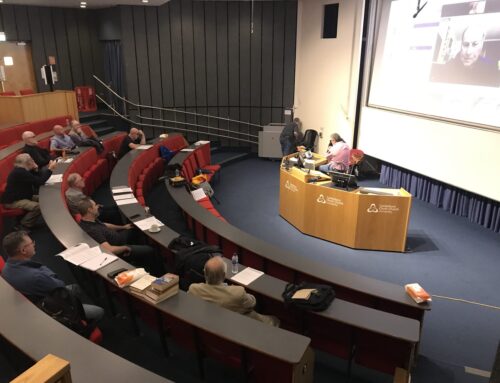Dealey Plaza U.K. York Seminar Oct. 12th 2019.

Text by: Richard Lee-Van Den Daele.
Photos by: Tony Power.
Videos by Stuart Galloway.
A change in venue marked this Autumn’s gathering of D.P.U.K.’s doughty northern contingent; the sumptuous surroundings of the York Raddison Park Inn were to play host to our deliberations this year.
The hotel is centrally located with very pleasant views over a River Ouse, now swollen with an unseasonal amount of rainfall.
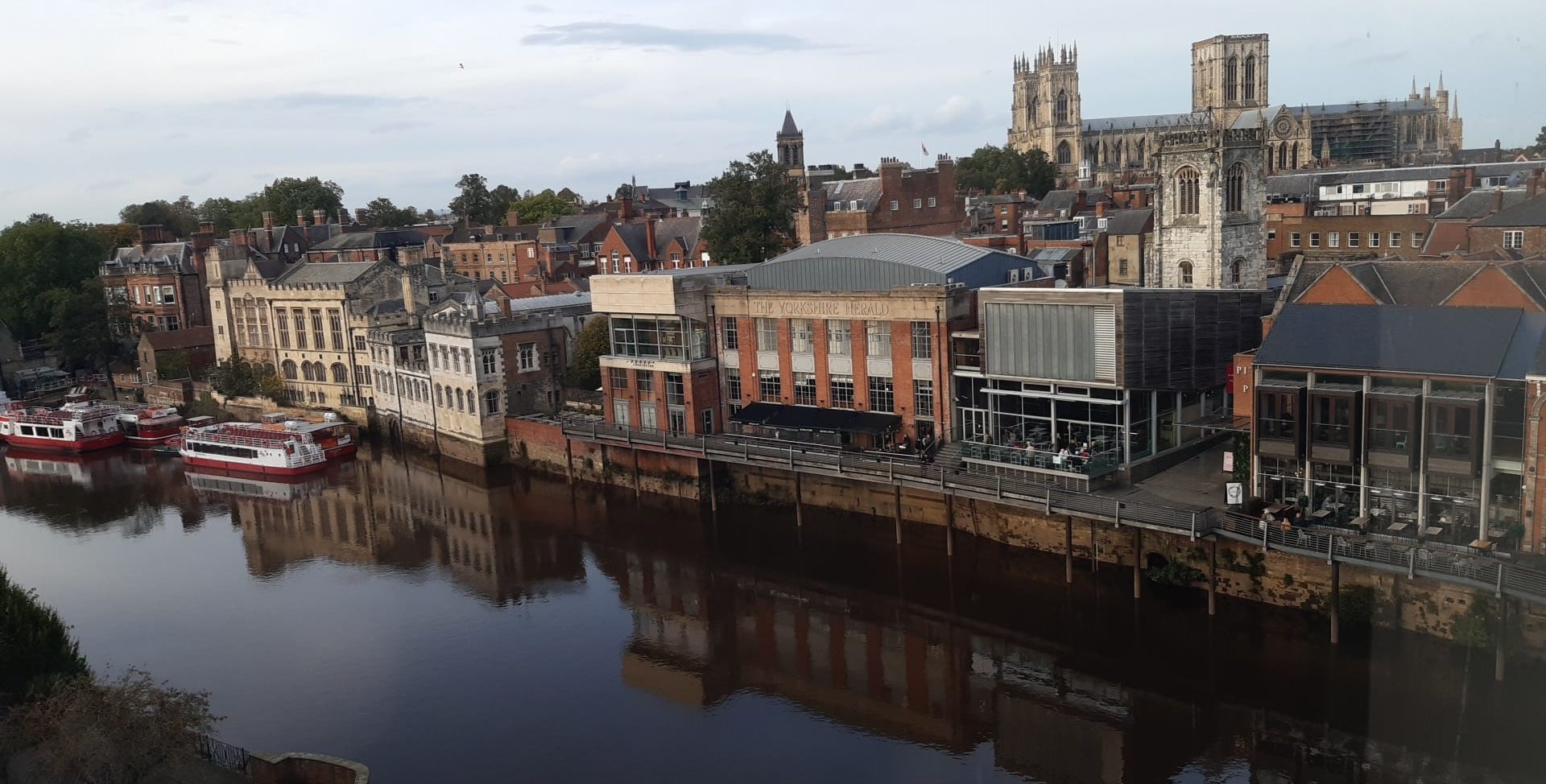
The rains were gone however and the day dawned bright and sunny as we gathered and renewed acquaintances from a year ago, almost picking-up where we had all last left off.
Arrangements were as deftly handled as ever by the indefatigable duo of Tony Power, ably assisted by Stuart Galloway and our thanks go to both gents for their planning and considerable efforts to ensure everything ran smoothly on the day.
Fortified with lashings of tea and coffee and epicurean cookies (Tony’s disingenuous claims that the latter were entirely inedible were soon exposed as a shameless attempt to amass them all for his own indulgence!) we kicked-off the day’s research topics with Stuart Galloway on the Robert Kennedy assassination.
Stuart’s presentation was everything we have come to expect from him – well structured, witty and smoothly delivered, with his sources clearly detailed and a slick Power Point display and audio clips making the mass of detailed information readily digestible. Honourable mention must be made here of Lyn Galloway, for whom a Golden Globe surely beckons, for her role as a browbeaten Sandy Serrano in a homemade ‘Galloway Production’ audio reconstruction of the appalling off-the-record tactics used by ‘Hank’ Hernandez of the LAPD to badger a witness. It was a surprisingly effective way of dramatically bringing the techniques he used leaping off the page.
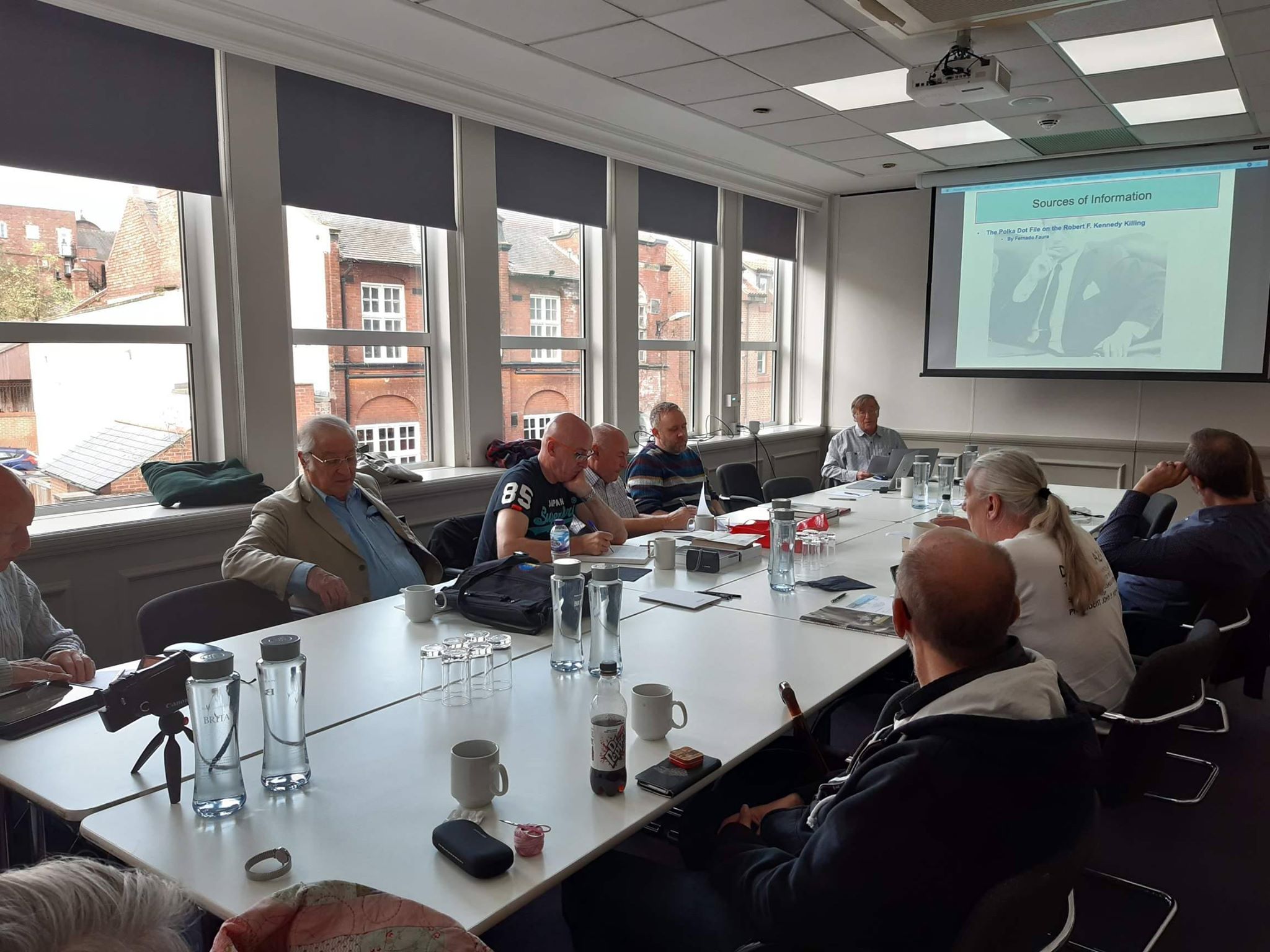
The overview Stuart gave was well delineated and, though we could perhaps have done with longer to absorb some of the finer points presented, it was one of Stuart’s customarily adroit looks at a large subject distilled into an easily comprehensible format.
After the mid-morning coffee break, that doyenne of DPUK symposia, Jean Shields, stepped-up to take us down a road less travelled – you could even say she was ‘Finished’ before she even began (groan!): Oswald’s visit to Finland. Her presentation, more properly titled “The Defectors to the USSR, Part 1”, was very broad and extremely well-researched.

I find that whilst most of us burrow away at a particular subject which fascinates us, sometimes it is at the expense of the bigger picture, or better put, the context in which it should properly sit. Presentations like Jean’s are very good at correcting that, a thought which struck me when her opening flourish touched on Khrushchev’s September 1959 visit to the USA for the “Thaw” Exhibition of Soviet Science, Technology and Culture, at the invitation of President Eisenhower. I vaguely recollect knowing about it, but it was lost in the recesses of my mind till Jean set out the context of the defectors period – and a most welcome reminder it was; so much so it set me off scurrying to find my copy of William Taubman’s superb biography of the Soviet leader.
Jean’s rigorous approach, and the many interesting byways down which she takes you, definitely leave you with an appetite for more, so to see the ‘part 1’ tag is most reassuring. I shall not wax lyrical further here as your Editors have prevailed on Jean to provide an article based on her presentation for this journal, so watch this space folks!
The very good lunch which followed allowed time for us to strike up our conversations again with fellow researchers, always an additional pleasure on days such as this.
Suitably sated and with fresh coffees to hand, we settled down to enjoy an absorbing presentation from Paul Brown on the Collins Radio connections to what took place in Dealey Plaza. This was a topic on which I knew little, which is what I always look forward to on a seminar day.
Paul’s relaxed approach allows him to communicate well with his audience and he set out by saying that his presentation was aimed at making a confluence of the work of several researchers on the topic and would be drawn from Donald Thomas’ “Hear No Evil”, Jim Douglass’ “JFK and the Unspeakable” and the redoubtable research of Bill Kelly (see JFK Countercoup). I cannot hope to give a true reflection of Paul’s talk in a few lines of synopsis, but in it he deftly wove together a fascinating story through which the golden thread of Collins Radio (a CIA front) ran. From Douglas’s book he highlighted the intriguing testimony of Warren H. “Butch” Burroughs, the concession stand operator at the Texas Theater, giving rise to the many questions about Oswald’s actions in the near-deserted cinema immediately prior to his arrest and the possibility of an Oswald double secreted perhaps in the balcony? At least two DPD reports support the story of the suspect being arrested in the balcony.
Burrough’s description of a second man’s arrest, handcuffing and removal from the rear of the building was supported by a neighbouring retailer. It was fun to be reminded of the consternation of Bernard J Haire of Bernie’s Hobby House, situated close to the theater, who ventured into the back alley as the commotion ensued only to see DPD officers arresting a young man and driving away – for over twenty years being convinced he had witnessed Oswald’s arrest, only to learn in 1987 that Oswald was detained and removed through the front of the cinema.
Space here militates against my delving much deeper into the fascinating story which, save to say, then went on to spotlight the very curious case of car mechanic T. F. White and the 1961 red Falcon in the parking lot of the El Chico Mexican restaurant near Mack Pate’s garage, his workplace. The sharp-eyed mechanic had his suspicions aroused by the oddly-parked car containing a young white male in a white tee shirt at 2:00pm eight block from the Texas Theater. He viewed the man full face and had the presence of mind to jot down the car’s Texas licence plate PP4537. The twists and turns of this fascinating story went on to show how some time later White gave the plate details to newscaster Wes White who traced the plate’s owner – though the car it belonged to was actually a 1957 Plymouth and its owner was none other than a close friend of J. D. Tippit, Carl Amos Mather. Mather’s work involved high-security communications work for Collins Radio, a major contractor for the CIA. Mather and his wife and they had even spent the afternoon of 22nd November consoling the dead policeman’s widow! Collins Radio and their involvement in avionics and the installing of equipment on LBJ’s Air Force 2 ‘plane was also highly interesting and Paul touched on the editing of the transmission tapes from the fateful afternoon. The phrase “you couldn’t make this up” really came into its own during his talk!
Another nugget unknown to me was the fact that Arthur Collins, founder of Collins Radio, was in the audience at the Dallas Trade Mart to hear the speech the slain President would never get to deliver. Collins was Director of the Research Center of the Southwest, a conglomerate of Texas defence contractors and local colleges and university engineering departments and the Center was even referenced in the first paragraph of the President’s undelivered speech. The Collins Radio connections are fascinating to follow up and Paul has particular admiration for Bill Kelly’s work which he feels is hugely rewarding.
Next up was Pete Mellor, another veteran presenter whose easy going style conceals a wealth of research. Pete is a dab hand at drawing together disparate strands and weaving them into a very convincing argument. His talk had a wide brief, US Intelligence links to other assassinations(!), which should present any other mere mortal with an uphill struggle considering his 50 minute, or so, time allocation. Pete, in his customary style, took the reins, cracked them sharply and set us off on an exhilarating canter through a kaleidoscope of assassinations and attempted ones.
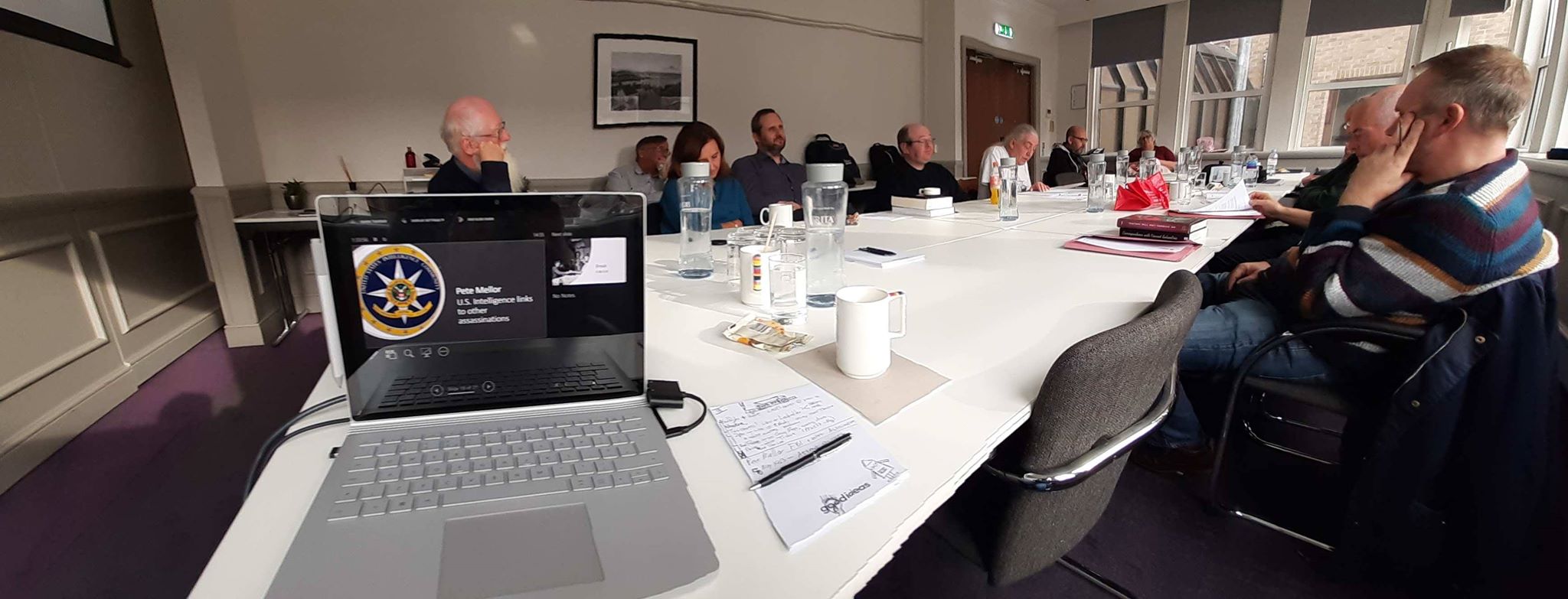
Tucking his thumbs metaphorically behind his lapels, he assumed the gravitas of a respected barrister when he intoned “I wish to present evidence, not of Dallas and the Kennedy assassination, but of other events in 1963 and beyond, that I believe exposes the identity of a serial killer. Any law enforcement group examining an unresolved murder case looks at the M.O., and the psychological profile of the offender(s).” And, so, off we went on our coruscating trip – Pavlick and his dynamite-filled truck in December 1960 near the Kennedy compound in Palm Beach; a prospective attempt on JFK’s life in Nashville during his May 1963 visit to Vanderbilt University; Richard Case Nagell; Joseph Milteer; Thomas Arthur Vallee and the Chicago plot; Santiago Garriga and the Tampa plot; Malcolm X and the 1968 murders of Dr Martin Luther King Jr. and Robert Kennedy also put in appearances.
He rounded off by pointing us to other appetite-whetters (like we have the time, Pete?!) by revealing the CIA-connections of John Lennon’s doorman at the Dakota building on the night of his 1980 killing, Jose Perdomo and also the connections of someone close to Rosa Monckton, close friend and confidante of Princess Diana, with MI6. Pete’s bibliography certainly led to a couple of purchases for me, in any case! If you have interest in the Diana case, Pete highly recommends the exhaustive research of the late Australian writer, John Morgan, whose multi-volume works on the death of Diana and her inquest led Michael Mansfield QC to laud his work.
Pete rounded off with a drawing together of his strands and a brief examination of Machiavellian techniques, closing by reminding us the over-riding compulsion for conventional ethics to be set aside for the pragmatic and expedient dictates of raison d’etat or “reasons of state”. A chilling end to a bravura performance!
Paul Jeffery, who joined us with his father Philip hot-foot, en route home from a holiday, gave another fascinating talk, all the more interesting because of the angle he took – namely that of his personal journey in research. Paul centred on three books which, albeit not necessarily recent publications, had a disproportionate impact on him, hence the prismatic title of his talk “The Unspeakable Mosaic on the Stairs”.
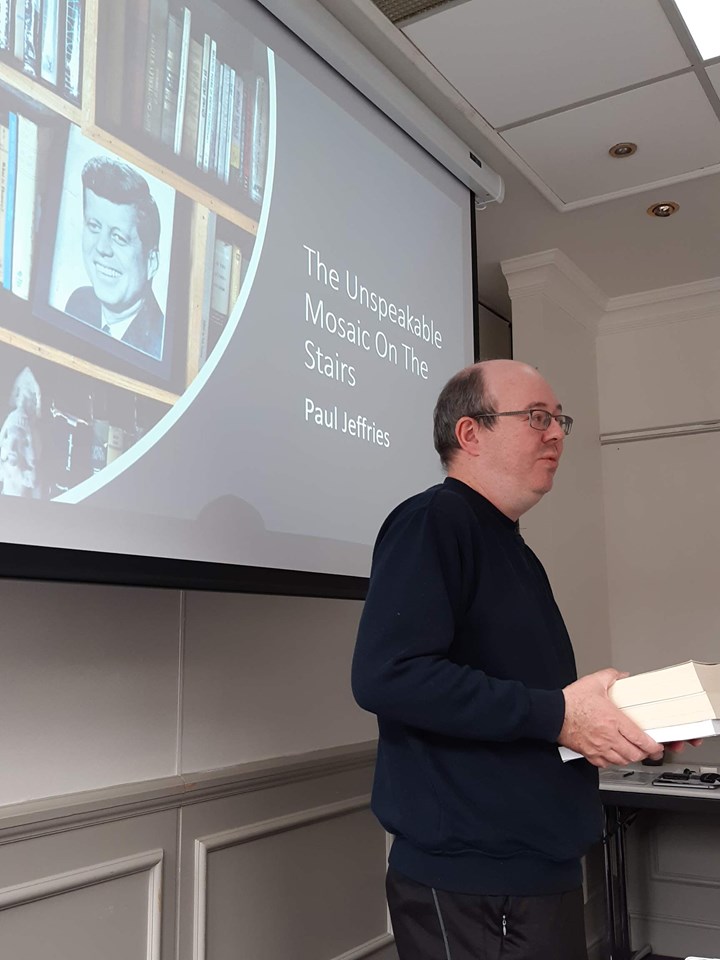
Paul had read the three books (Jim Douglas’ “JFK and the Unspeakable”, Peter Janney’s “Mary’s Mosaic” and Barry Ernest’s “The Girl on the Stairs”) over the course of the last twelve months and he recounted how they had affected, moved and inspired him. The chord which had been particularly struck with Paul was that all three books charted a personal journey on the part of each author.
Janney’s investigation into the professional-style murder of society figure, JFK mistress and confidante Mary Pinchot Meyer is an intriguing one, especially given that the author’s family knew the Meyers during his childhood and he knew Mary personally.
Meyer was no airheaded concubine, she was both intelligent and well-read and her relationship with Kennedy may well have influenced his approach in turning away from conflict and toward peace. After JFK’s assassination she studied the investigation into his murder closely and became increasingly convinced that what was being presented was heavily skewed and masked the truth behind his killing. Her conviction and insistence on talking to Washington insiders she knew, along with a determination to be heard publicly may well have prompted members of the establishment to move against her. Paul greatly admired Janney’s approach which, in a way echoed Weisberg’s sage dictum, to find an investigative furrow and research the hell out of it.
Jim Douglas’ theological angle in his book also stimulated Paul, who enjoyed the multi-layered approach examining Kennedy’s isolation in his foreign policy and the slow angering of both his Joint Services Chiefs and many establishment and industry figures, citing Henry Luce and the US Steel crisis. Refracting what he had learned from Janney’s research into Meyer, Paul spoke about his conviction that Kennedy was a Cold Warrior turning toward peace. The great “If Only” hanging over the Kennedy presidency was what would the world have been like if he had lived, if he had not been out-manoeuvred on Vietnam? If that great unseen, unspoken force “The Unspeakable”, in the form of his security apparatus, had not moved against him? Paul also highly recommends seeking out Jim Douglas’ lectures on YouTube.
Paul closed by speaking of his respect for the indefatigable work of researcher Barry Ernest in tracking down the whereabouts, and exposing the falsehoods perpetrated on the testimony of, Victoria Adams, the former TSBD employee. Again it was Ernest’s personal journey which had providing such an absorbing background to his search, a search which found Adams in the nick of time as she was to die just five years later in 2007.
As Paul found the personal stories of the three authors he cited to be critical to his appreciation of their work, so it was Paul’s personal relationship with each of these books and the affect which they had on his and his own research which provided us as his audience with a fresh dynamic and I doubt I was alone in leaving the venue that evening muttering to myself “I really must dig out those books and read them again”, testament enough to a very thought-provoking presentation.
A vote of thanks to all the presenters and to Tony Power and Stuart Galloway for arranging yet another excellent day in the far-flung north brought to a close another great DPUK symposium and more than one person was heard to raise the possibility of having more than one such northern gathering annually.

I should like to make clear that the scurrilous rumour that Tony was seen leaving with bulging pockets and a trail of biscuit crumbs in his wake, has no basis in fact.
If you haven’t yet attended one of the seminar days, they come highly recommended and not only do you broaden your own research horizons, you also get to meet some great new friends and stimulating folk into the bargain.

